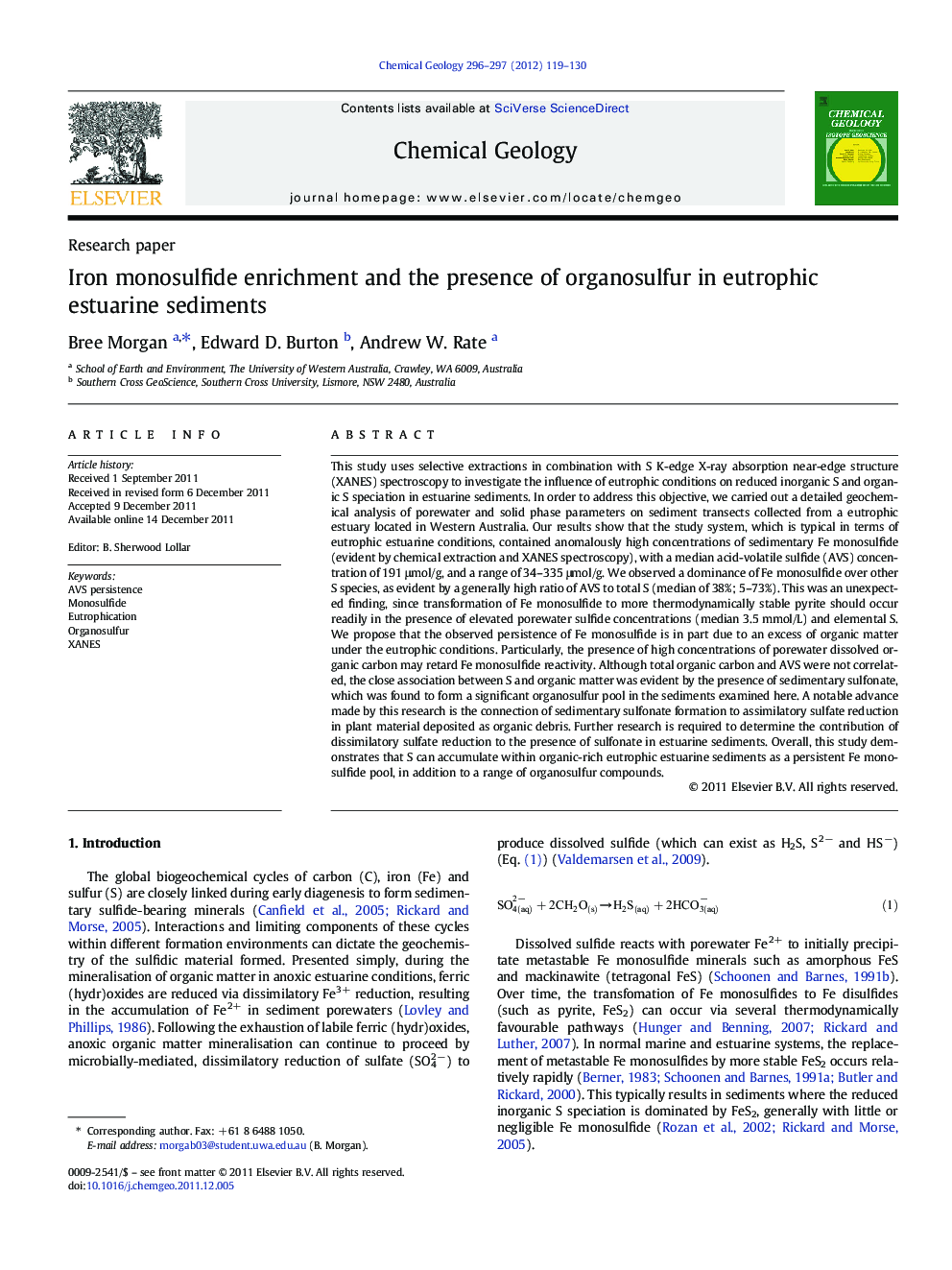| Article ID | Journal | Published Year | Pages | File Type |
|---|---|---|---|---|
| 4699532 | Chemical Geology | 2012 | 12 Pages |
This study uses selective extractions in combination with S K-edge X-ray absorption near-edge structure (XANES) spectroscopy to investigate the influence of eutrophic conditions on reduced inorganic S and organic S speciation in estuarine sediments. In order to address this objective, we carried out a detailed geochemical analysis of porewater and solid phase parameters on sediment transects collected from a eutrophic estuary located in Western Australia. Our results show that the study system, which is typical in terms of eutrophic estuarine conditions, contained anomalously high concentrations of sedimentary Fe monosulfide (evident by chemical extraction and XANES spectroscopy), with a median acid-volatile sulfide (AVS) concentration of 191 μmol/g, and a range of 34–335 μmol/g. We observed a dominance of Fe monosulfide over other S species, as evident by a generally high ratio of AVS to total S (median of 38%; 5–73%). This was an unexpected finding, since transformation of Fe monosulfide to more thermodynamically stable pyrite should occur readily in the presence of elevated porewater sulfide concentrations (median 3.5 mmol/L) and elemental S. We propose that the observed persistence of Fe monosulfide is in part due to an excess of organic matter under the eutrophic conditions. Particularly, the presence of high concentrations of porewater dissolved organic carbon may retard Fe monosulfide reactivity. Although total organic carbon and AVS were not correlated, the close association between S and organic matter was evident by the presence of sedimentary sulfonate, which was found to form a significant organosulfur pool in the sediments examined here. A notable advance made by this research is the connection of sedimentary sulfonate formation to assimilatory sulfate reduction in plant material deposited as organic debris. Further research is required to determine the contribution of dissimilatory sulfate reduction to the presence of sulfonate in estuarine sediments. Overall, this study demonstrates that S can accumulate within organic-rich eutrophic estuarine sediments as a persistent Fe monosulfide pool, in addition to a range of organosulfur compounds.
► AVS persistence is observed in eutrophic estuarine sediments. ► High concentrations of porewater DOC may retard FeS reactivity. ► High organosulfur shows close association between sulfur and organic matter. ► Sedimentary sulfonate can be sourced from assimilatory sulfate reduction.
